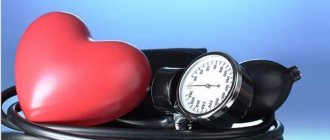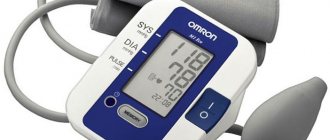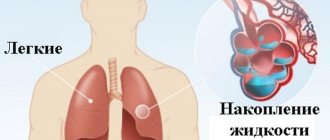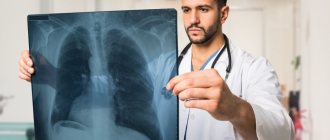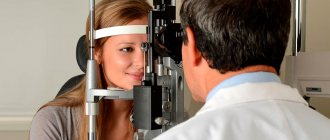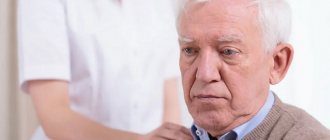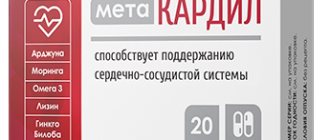Over the years, the body ages. Ailments associated with changes in the functioning of organs appear. The elasticity of blood vessels is lost, which affects the functioning of the heart. The nervous system becomes unbalanced. The slightest stress causes emotional disorders.
You immediately feel an increase in heart rate, headache, shortness of breath, and cardiac colic. These are the first symptoms indicating fluctuations in blood pressure in older people. It sometimes jumps several times a day, and for some it leads to unpleasant consequences. To avoid trouble, you need to have a blood pressure monitor in your home, monitor blood pressure readings in a timely manner, consult a doctor if necessary, and take prescribed medications.
Blood pressure: normal, high or low
Blood pressure readings indicate the patient's health. It's nice when they are normal. Often measurements show deviations, both upward and downward. To understand the numbers when measuring pressure, you need to understand the basic terms:
- Systolic or upper pressure is formed at the moment when blood is pushed out of the heart.
- Diastolic or lower is calculated during the pause between heartbeats.
- The pulse is determined by the difference between two values: upper and lower (or systolic and diastolic).
- Blood pressure is measured in special units – millimeters of mercury. When measuring pressure, two values are indicated through a fraction: upper and lower.
Dangerous complications
Many people treat arterial hypotension with disdain, because very often its only symptoms are drowsiness and dizziness. It rarely leads to dangerous complications such as heart attack or stroke, unlike hypertension. Meanwhile, spontaneous syncope and their consequences can be extremely severe.
Low blood pressure leads to a decrease in perfusion (blood supply) of many organs and systems. The cells of the myocardium and brain are considered the most sensitive. Due to reduced blood flow, they do not receive enough oxygen and nutrients, which can lead to hypoxia.
When cerebral blood flow decreases, a person will first feel sleep disturbances. Then he will begin to have problems with memory and concentration. Thinking will become slower and more incoherent. As a result, the above processes can lead to dementia - senile dementia.
The presence of orthostatic hypotension often causes fainting. As a rule, after them a person quickly comes to his senses, but sometimes a fall can cause severe head injuries.
If the heart muscle does not receive enough oxygen, its contractility decreases, which leads to an even greater decrease in blood pressure. A vicious circle arises: decreased contraction force and oxygen starvation.
Normal blood pressure in the elderly
The generally accepted norm is blood pressure readings within 120/80 mm. Hg Art. However, medical observations and research conducted made it possible to make adjustments to these figures. Now they are called conditional, indicative and depend on age and gender. Normal blood pressure in the elderly ranges from 120/80 to the following readings:
| Men | Women | |
| 50 - 70 years | 141/85 | 145/85 |
| Over 70 years | 143/80 | 158/85 |
conclusions
Low blood pressure is rare in people over 50 years of age. The main cause of the phenomenon is considered to be genetic predisposition. This condition (sometimes caused by coronary artery disease, or impaired renal function) can be accompanied by a sharp disruption of cerebral blood supply, and therefore requires close attention.
Treatment of hypotension in older people includes the use of medications such as caffeine and herbal tonics. Physiotherapeutic measures are also recommended for the patient.
High blood pressure in older people: hypertension
Increasingly, as people age, they complain of ailments. High blood pressure in older people is common. When the tonometer readings are above 140/85, we are talking about the development of hypertension. The disease is found everywhere. There are many reasons for its development:
- predisposition in the family;
- excess weight;
- sedentary lifestyle;
- stress;
- poor nutrition;
- smoking and alcoholism.
Increased blood pressure is caused by a large number of diseases that appear with age. They lead to changes in the body:
- the amount of extracellular fluid increases, swelling appears;
- the walls of blood vessels hypertrophy;
- the speed of blood flow changes;
- the kidneys cannot remove fluid;
- cardiac output decreases.
All these changes are considered unfavorable for the elderly. They entail a gradual increase in pressure, often leading to a hypertensive crisis.
Treatment
The condition requires conservative therapy. The patient must constantly monitor his blood pressure using a tonometer and inform the doctor about any changes. Before using any medications, you should consult a specialist.
Emergency aid: what is best to have on hand
If there is a sudden decrease in pressure, your help should be to ensure normal cerebral blood flow. Algorithm of actions:
- Lay the person down on the bed. The head should not be held in an elevated position. Lower it to improve blood flow to the brain.
- Open the window, loosen tight clothes.
- Give the patient warm sweet tea or coffee. Offer him dark chocolate or something salty - these foods tend to increase blood pressure.
- If there is no caffeine at home, give the person citramon, panadol or askofen - they contain this substance in lower concentrations.
- If someone has lost consciousness, give him a sniff of ammonia. Apply a few drops to a napkin/handkerchief and bring it to your nostrils.
When such measures are not effective, call an ambulance. If the person is unconscious, turn him on his side.
Continuous drug support
After determining the cause of hypotension, treatment for the underlying disease is prescribed.
Drug therapy to maintain stable blood pressure includes drugs from the following groups:
- Caffeine-containing products that stimulate the activity of the nervous system, increase muscle tone (including those in the walls of blood vessels), and activate metabolic processes. The standard dosage for an adult is 1 tablet (200 mg) per day. Strictly contraindicated in the presence of arrhythmias. In pharmacies it is found under the name Caffeine Sodium Benzoate.
- Herbal adaptogens are drugs with a general tonic effect. These include:
- Eleutherococcus tincture;
- Schisandra chinensis;
- Echinacea purpurea;
- Ginseng.
- Nootropic drugs (cerebroprotectors) – have protective properties, increase resistance to hypoxia, improve cognitive abilities (memory, intelligence), and normalize sleep. Among them are:
- Piracetam;
- Glycine;
- Noofen;
The following medicinal plants can be used as folk remedies to increase blood pressure:
- milk thistle leaves;
- sea buckthorn;
- motherwort grass;
- liquorice root.
It is necessary to observe preventive measures: it is recommended to take walks in the fresh air more often, exercise, and take a contrast shower. To avoid orthostatic collapse, it is necessary to get out of bed slowly, first moving to a sitting position, then standing.
How to treat high blood pressure
An increase in blood pressure cannot always be noticed without using a tonometer. Often the symptoms are similar to general fatigue and overwork. In the absence of help, the disease gradually gains unpleasant momentum.
As an emergency treatment, drugs that have an immediate effect are used.
The drugs are available in different dosages, so a doctor’s advice is required so as not to harm the body, but to prevent the development of a stroke. To obtain a hypotensive effect, the tablet is placed under the patient’s tongue and gradually dissolves.
If you have hypertension, you will have to constantly take medications to keep your blood pressure normal. Their effect is usually limited to a day. To obtain a cumulative effect, hypertensive patients are advised to take prescribed medications at one time of day.
To control the disease, complex therapy is sometimes prescribed. Antihypertensive, diuretic, and cardiac medications are used. If there is no desired effect, the medications must be changed after 2 weeks.
No drug is used without a doctor's prescription. The treatment regimen is selected individually.
Only a doctor determines the need to use diuretics, beta and alpha blockers.
Diagnostics
During the initial examination, a general practitioner or cardiologist assesses the constitution and nutritional status, and conducts a physical examination of the respiratory and cardiovascular systems. In addition to standard blood pressure measurements, 24-hour blood pressure monitoring is recommended to obtain a complete picture. A diagnostic search involves the appointment of a set of laboratory and instrumental methods:
- Blood tests.
The hemogram often has a reduced content of hemoglobin and red blood cells, and with infectious shock, high leukocytosis is observed. During a biochemical blood test, attention is paid to the level of total protein, electrolytes, and cholesterol. For symptoms of anemia, serum iron, ferritin, and transferrin levels are examined. - Hormonal studies.
If persistently low blood pressure is detected, the level of thyroid hormones T3 and T4 and the pituitary hormone TSH must be measured. The concentration of catecholamines and adrenal steroid hormones is determined in the blood and urine. According to the indications, the level of insulin and C-peptide is assessed. - ECG.
Used as a screening method to assess the electrical activity of the heart. If cardiac arrhythmias and signs of myocardial ischemia are detected on the cardiogram, echocardiography is necessary. With echocardiography, the contractility of the heart is assessed and structural anomalies are found. - Neurological examination.
In the absence of other causes of low blood pressure, the patient is referred to a neurologist. To assess the functioning of the autonomic nervous system, the doctor performs breath-holding tests during inhalation and exhalation, orthostatic and clinostatic tests.
Low blood pressure in the elderly: hypotension
A sharp deterioration in general condition causes low blood pressure in an elderly person. Hypotension develops when blood pressure readings are below 100/60. It can be the result of a long stay in bed after an illness, surgery, poor nutrition, or taking medications that lower blood pressure. Weather, excessive emotional stress, nervous disorders, and acute blood loss affect health.
Signs of the disease:
- headache;
- weakness;
- noise, ringing in the ears;
- blurred vision (floaters before the eyes);
- fainting;
- feeling of chilliness in the limbs;
- cold sweat;
- blackout.
Without help, an ischemic stroke may occur or dementia may gradually set in.
Clinical picture
The pathology is characterized by symptoms of impaired cerebral hemodynamics and hypoxia of other organs:
weakness, fatigue, apathy, drowsiness;- weather sensitivity;
- absent-mindedness, memory impairment;
- emotional lability, irritability;
- shortness of breath on exertion;
- tachycardia;
- dizziness, syncope (fainting);
- headache (usually in the frontal and temporal parts);
- pale skin, hyperhidrosis (sweating).


